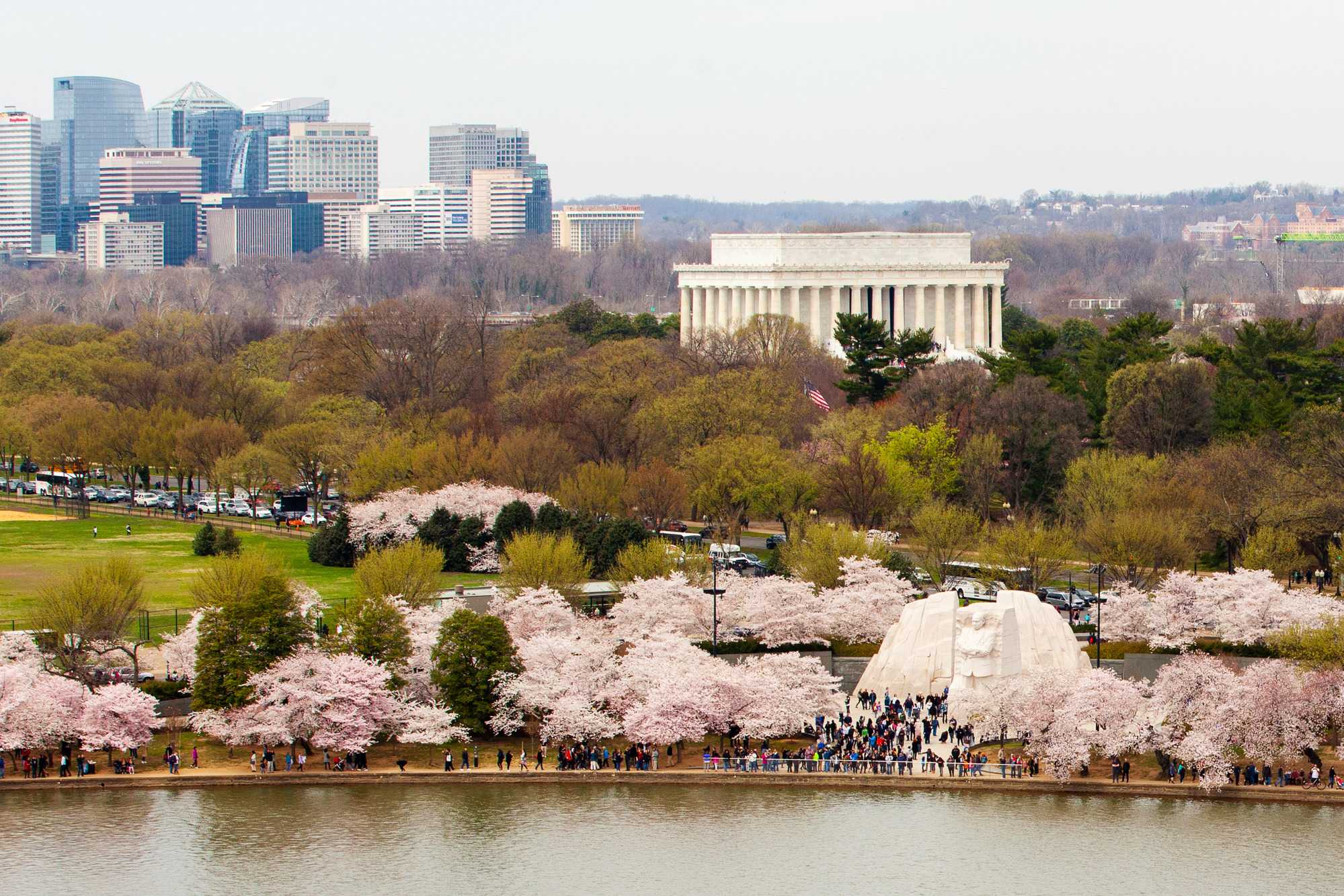The National Park Service (NPS) announced a $113 billion three-year construction project to rehabilitate the Tidal Basin seawall along the Potomac River and through West Potomac Park on March 13.
Of the 300 trees being removed for the project, 158 of them will be cherry blossoms. The NPS project is funded by the Great American Outdoors Act Legacy Restoration Fund, an annually renewed 1.3 billion dollar piggy bank aimed at addressing the maintenance backlog at National Parks, and is slated to occur alongside an additional 500 million dollars in infrastructure improvements on the National Mall in 2026.
The seawalls have suffered from rising sea levels and poor drainage, causing portions of the seawall to reportedly overflow twice a day. Despite multiple attempts at repairing the seawalls over the years, NPS has decided to remove and reconstruct the stone masonry walls, adding support infrastructure to prevent the seawall from settling.
Vincent Drader, director of communications and development at Casey Trees, a nonprofit organization dedicated to the restoration, enhancement and protection of the D.C. tree canopy, said that the heavy flooding has been slowly but surely killing cherry trees by drowning their root systems.
“The current project should actually make the living conditions better for the replacement cherries once they are installed,” Drader told The Hoya.
While Casey Trees does not have the resources to rehome hundreds of adult trees, Drader said that the cherry trees will be replanted through cloning processes.
“The National Arboretum is going to take cuttings of the current trees to propagate clones to be replanted,” Drader said.

Diana Mayhew, President of the Cherry Blossom Festival, an annual month-long celebration of the blossoms, said that the National Park Service needs to replace 90 trees annually due to flooding.
“They’re now going to be planting double the amount they take down, which is what’s really important,” Mayhew told The Hoya.
According to the National Park Service, approximately 300 trees are scheduled for removal in the construction zones. When the project is completed, 455 trees, including 274 cherry trees, will be replanted in the area.
The National Park Service reported that these improvements to the seawall will create long-term benefits for the cherry trees and Tidal Basin area.
“This critical investment will ensure the park is able to protect some of the nation’s most iconic memorials and the Japanese flowering Cherry trees from the immediate threats of failing infrastructure and rising sea levels for the next 100 years,” the NPS said in a press release.
The protection of cherry trees is crucial for the D.C. community, as cherry blossoms have been in the D.C. area for 112 years. The annual Cherry Blossom Festival approaches its 97th festival, although residents and tourists have celebrated the blossoms’ arrival before that.
“The festival itself has happened in some shape or form since 1927, starting with a reenactment of tree-planting with schoolchildren,” Mayhew said.
Apart from organizing the celebration, the Cherry Blossom Festival is also working to repair and grow the D.C. canopy.
“We’ve planted cherry trees all over the community, including Georgetown University, George Washington University and Howard University,” Mayhew said.
According to Mayhew, preparation for each festival begins a year to a year and a half in advance, pulling in partners from the DMV area and fundraising.
“Our goal is to keep these events free and open to the public, making sure the celebration happens past the Tidal Basin and throughout the city,” she said.
Mayhew said the construction, which is projected to end in 2027, will not pose a threat to the current festival activities. So far, residents have enjoyed four weekends of events including the Pink Tie Party, an international culinary celebration and auction, an event where students painted Nike sneakers with Cherry Blossom designs, and “Petal Porches,” the decorating of community porches with intricate Cherry Blossoms.
Mayhew emphasized the importance of recognizing and appreciating the culture surrounding the Cherry Blossom trees in the nation’s capital.
“Our goal for the festival is to make sure the residents know this is a treasure of D.C., to feel community pride,” Mayhew said.








